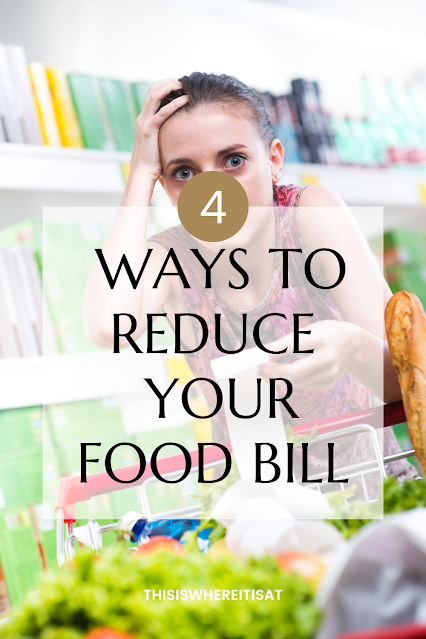How to make money by watching Google Ads
Where can you take your reusable cup in the UK
LowPriceFoods.com review.
Hey readers,
including:
* Frozen foods (such as peas, chips and ice cream).
I have also previously done a review of an alternative low coast food website called Best before its gone so do check that blog post out as well.
What I received.

Lily O'Brien's petit desserts chocolate collections RRP £8.00 I paid £3.95.
2 packs of Seabrook loaded rings zingy prawn cocktails RRP £3.58 I paid £1.95.
4 packs of M&S Collection turkey feast crisps share bags RRP £5.95 I paid £2.50.
1kg Luxury chocolate broken biscuit assortment RRP £5.95 I paid £3.95.
3 x Monty Bojangles cocoa dusted truffle boxes RRP £8.99 I paid 2.50.
In total if I had brought the items at the original cost I would have had to pay £39.97.
However, with the reduced price due to best before the date, it cost me £19.60 giving me a saving of.
The shipping cost me £4.45. I had a discount code "RA50" which gives you £2.50 (double check if you are using this as it might not be valid.
If not then just google Low Price Foods discount codes as there are regular ones to be found on the internet.
Overall I think it is a good way to save some money on food and snacks. It is also good to help reduce food waste. I found the delivery was about 8 days with Evri delivery service.
I had no problems with delivery as I had an order number and got notifications when my order was out on delivery.
My Package was well secured with cardboard boxes and within the boxes were smaller cardboard boxes that protected the food items to protect the goods such as crisps and biscuits.
The food was absolutely fine for all my family, and the crisps weren't as crisp but that was fine I didn't expect that as they had a short life but they still were enjoyable.
I can't complain, they were good bargains and definitely be making another order in the future as it is a great way to save some money in my grocery shop.
Have you tried Lowpricefoods.com? love to hear your thoughts in the comment section below.
Cheers for reading X
7 ways to reduce food waste at home
GreenJinn app review
With the cost of living rising, we are all looking for ways to help reduce the cost of our good bills. There are a few good apps that can help by giving you free or a percentage off food items.
What is the Grennjin app?
Greenjinn is a cashback app that either gives you free food or gives you food at a discounted rate. You can get the cash back after you have bought the item from the specific store and the item it says on the app.
* Sainsbury's
* Waitrose
* Tesco
* Morrisons
* Asda
* Coop
* Boots
* Plant Organic
* Booths
* Ocando
* MFG
The type of items that Greenjinn offer at a reduced cost or as a freebie are oat milk, lemons, toothpaste, washing up liquid that sort of thing.
How do you get paid?
Once you have scanned your receipt and it has been confirmed, you can opt to be paid either by Paypal or directly into your account.
Is GreenJinn worth it?
On the plus side, GreenJinn has the most offers available out of all the receipt apps I have downloaded on my phone. But sadly, it’s also the weakest when it comes to how much money you can save, with the discounts lacking compared to its rivals.
Take a look at the offers and then tap the ones you plan on buying to add them to your cart. Once purchased, take photographs of your receipt via the app, clearly showing the time, date, products and supermarket name. You can take several if you need to.
Once uploaded and processed the cashback will be added to your account. You will then need to request to withdraw this to your Paypal account. You will either be refunded the full amount or a part of the purchase price, depending on the offer.
Always check the app before you go shopping to see if there are any offers you can take advantage of.
Write down the size and name of products in case you can’t get a signal while shopping to check them while shopping.
Make sure you get a receipt, even when using the self-service checkouts.
How to save money on your clothes
Hey readers,
Times are tough and we are looking for ways to cut down our costs of spending one way we can do that is by reducing the amount we spend on clothing. I have 5 tips on how to save money on your clothes.
1. Recycle old clothes for vouchers
These schemes all
reward you for recycling old clothes:
- H&M -
receive a £5 voucher (to be redeemed against a £25 shop) if you recycle a
bag of unwanted clothes or textiles from any store in any condition at a
branch of H&M.
- Marks and Spencer - receive a £5
voucher (to be redeemed against a £35 shop) if you donate items to Oxfam
(either clothing or soft furnishings). They must not be damaged or soiled
as clothes will be resold. You can also donate items in M&S stores
under the retailer's 'Shwop' scheme - you won't get a voucher but Sparks
members will get a free treat if they scan the QR code on the donation
box.
- New Look - take good-quality,
pre-loved fashion to a Hospice charity shop (find them here), scan the QR code on the counter
and receive 15% off your next shop at New Look.
- Schuh - receive a £5 voucher (to
be redeemed against a £25 spend) when you bring an old pair of shoes (any
brand).
- Sweaty Betty -
receive a £10 voucher (to be redeemed against a £50 spend) when you
recycle an old pair of leggings (any brand) to the store, which can also be done
online.
2. Shop out of season.
We know, it’s exciting to buy things pre-season. When it’s icy outside,
that lightweight sundress makes you feel like spring is right around the
corner. But if you’re buying in anticipation of what’s next, you’re paying the
maximum retail price. If you shop for what’s not happening, you’ll get a much
better price. Sure, it might feel weird to buy a sweater when it’s nearly
triple digits outside, but it’ll save you some cool cash.
3. Where to buy second-hand clothes
There are many
places where you can buy second-hand clothes, either in-store or online.
For stores try
local charity shops, or antique shops if you like vintage clothing. Many such
shops have now reopened with all the necessary Covid-related measures in place.
You will need to be prepared to browse as obviously everything is a one-off
item and you can’t guarantee what will or will not be there. But there are many
bargains to be had and you will be helping to support either a charity or a
local business
There are also many online auctions and selling sites, for example:
* eBay
* Depop
* Preloved
As well as searching for specific items that you want, it can also be worth including the word “bundle” or “job lot” in your search. You can often find a listing that includes several items which a seller does not have time to list individually, so can work out at incredible value. And if there are some of the items that either don’t fit or you don’t like, you can always pass them on to friends or your local charity shop: you will still bag a bargain.
5. Try
'swishing'
'Swishing' is the term for swapping items of clothing or footwear with
other people. Instead of shopping for new garments, it’s worth getting a group
of friends or colleagues together to swap unwanted clothes.
6. Upcycle existing
garments
Changing your existing clothes is one way to
freshen up your wardrobe without throwing out and replacing the whole lot.
Merion Willis, the Craft Editor at Lovecraft's, said embroidering flowers, geometric patterns or fun lettering to clothing can give a personal finish.“Adding embroidery to tired knitwear is a super-fast way to brighten it up.”
What do you think of my tips on how to save money on clothes? Have I missed a good way to save money that you use that has helped you? Love to hear your thoughts in the comment section down below.
Cheers for reading X
4 ways to reduce your food bill





















